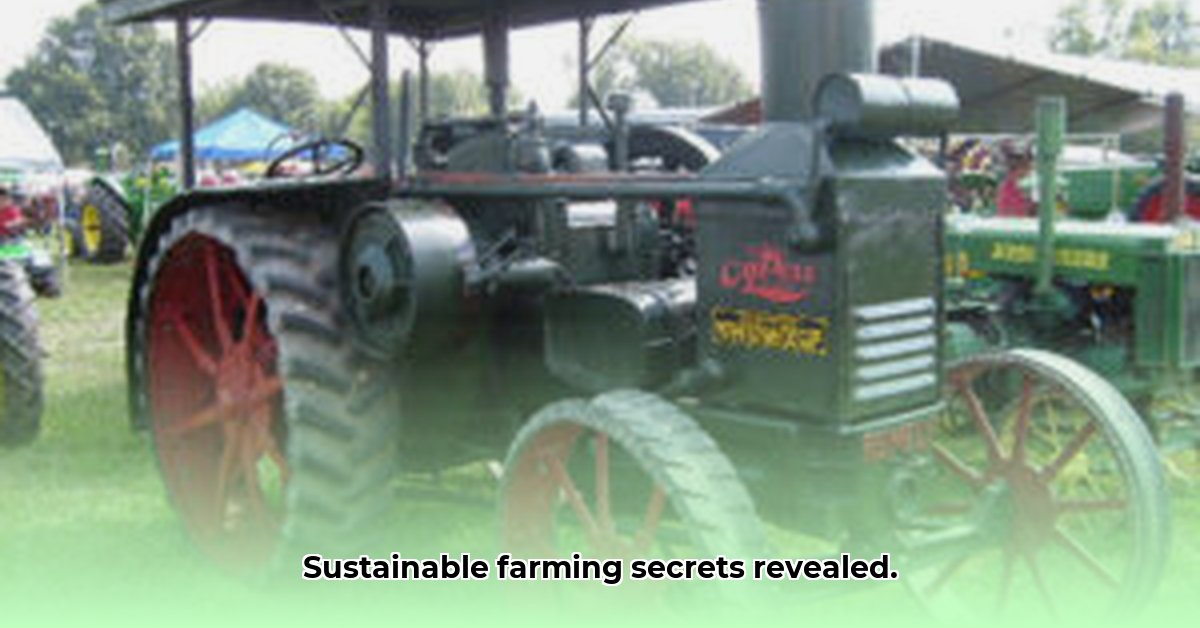
The Findlay Tractor Show, an annual event hosted by the Northwest Ohio Antique Machinery Association (NOAMA), offers more than just a nostalgic glimpse into agricultural history; it provides valuable insights for modern sustainable farming practices. For over half a century, this show has showcased the evolution of farming technology, highlighting both advancements and the environmental consequences of those changes. Surprisingly, these antique machines aren't relics of the past; they hold key lessons for building a more sustainable future for agriculture. This article explores the unexpected connections between antique machinery and modern sustainable agriculture, demonstrating how seemingly outdated practices can offer valuable insights into environmentally responsible solutions. Learn more about antique tractor history at this website.
A Journey Through Time: The Evolution of Farming Technology
Stepping onto the grounds of the Findlay Tractor Show is like stepping back in time. Rows of meticulously restored tractors, from early gasoline-powered behemoths to more streamlined later models, chronicle significant technological shifts in farming. The sheer physical effort required to operate some of these early machines is striking, prompting reflection on the environmental impact of this early technology – a stark contrast to the highly efficient equipment we see today. But how did these transitions impact the environment? Did older, less efficient methods unexpectedly provide hidden environmental benefits? This requires careful analysis and further research. For example, some argue that older farming methods, while slower, might have been gentler on the land due to reduced soil compaction.
How did fuel consumption and land usage compare between those earlier methods and modern techniques? Precise comparisons are challenging due to limitations in historical data, but the question itself highlights the importance of investigating the full environmental lifecycle of both past and present farming practices.
Beyond the Machines: Community and Collaboration
The Findlay Tractor Show isn't just about the machinery; it's about the thriving community it fosters. For decades, volunteers and enthusiasts have built a strong network around a shared passion for agricultural heritage. This isn't mere nostalgia; it's a crucial resource for promoting sustainable farming practices. This vibrant community offers a fertile ground for collaboration between farmers, researchers, and agricultural enthusiasts, facilitating the sharing of knowledge and experience to foster innovation. This shared passion is clearly evident in the show’s atmosphere. The powerful community network is an often-overlooked component of driving adoption of sustainable practices.
From History to Action: Practical Steps for Sustainable Agriculture
The true potential of the Findlay Tractor Show lies in its ability to translate historical insights into actionable steps toward a more sustainable future. By connecting past practices with present challenges, the show offers a unique platform for positive change.
Step 1: Education and Knowledge Sharing:
- Interactive Workshops: The show should incorporate workshops comparing older and modern farming technologies, highlighting both advantages and disadvantages. Hands-on demonstrations can make historical practices far more engaging.
- Cross-Generational Dialogue: Foster open dialogue between experienced farmers and agricultural researchers. This exchange of perspectives brings a dynamic to discussions that can help to accelerate the rate of adoption of new practices.
Step 2: Collaboration and Partnerships:
- Strategic Alliances: NOAMA should form partnerships with sustainable agriculture groups and local governments to amplify its reach and impact. Joint efforts can significantly increase awareness and accelerate the adoption of sustainable practices.
- Targeted Research Funding: Secure funding for research comparing the environmental impact and efficiency of older vs. modern farming equipment. Data-driven insights are essential for evidence-based decision-making.
Step 3: Inspiring Change and Showcasing Success:
- Farmer Engagement: Encourage local farmers to attend the show and participate in discussions. Highlighting success stories of farmers who have successfully implemented sustainable practices can inspire others to follow suit.
- Promoting Models of Success: Showcase farmers who embody sustainable agricultural practices. Their accomplishments serve as tangible evidence of the feasibility and benefits of sustainable agriculture.
Fuel Efficiency: Lessons from the Past
The show offers a unique opportunity to compare fuel efficiency across different eras. Early tractors often relied on less efficient fuel alternatives like kerosene or propane, each posing unique challenges in terms of combustion efficiency, maintenance needs, and logistics. While direct comparisons to modern diesel engines are complex due to data limitations, examining these historical choices provides crucial context. Are there lessons from past struggles to help guide the development of modern sustainable fuels? The simplicity and robust design of older machines might even inspire more durable and repairable equipment today.
Conclusion: A Legacy of Sustainable Practices
The Findlay Tractor Show, by showcasing the evolution of agricultural machinery and fostering community, provides a unique path toward greater agricultural sustainability. By learning from the past, we can discover surprisingly relevant solutions to modern challenges. It's not just about looking backward; it’s about building a brighter and more sustainable future for farming through collaboration, research, and the practical application of lessons drawn from history. The show itself is a powerful symbol of this endeavor.